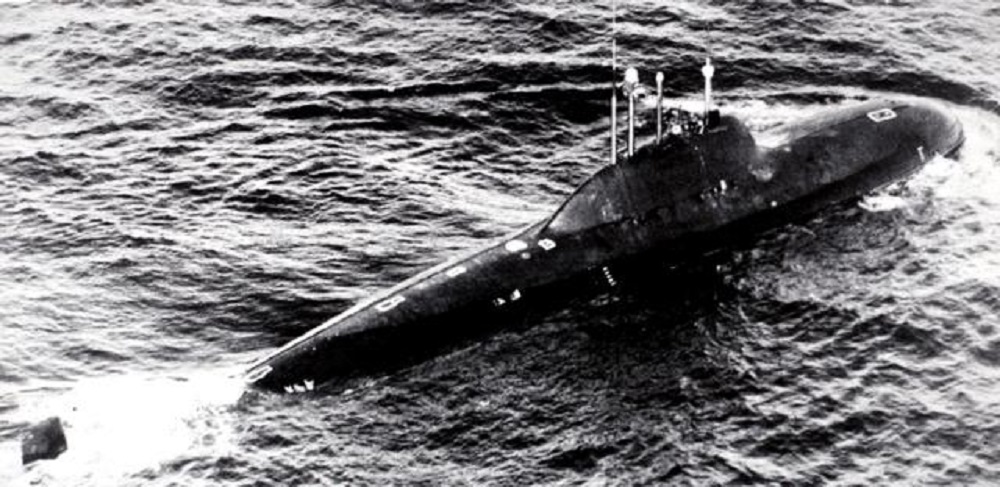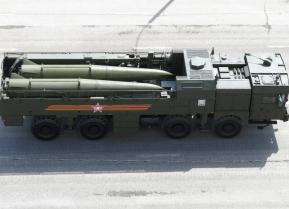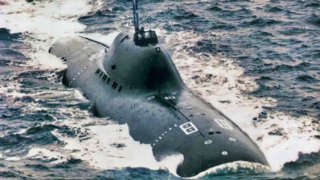Russia's Titanium Alfa-Class Submarine Explained in 2 Words
The Soviet-era Alfa-class submarine was a groundbreaking, high-performance vessel that demonstrated Russian submarine innovation. Built with a titanium hull and powered by a lead-bismuth-cooled reactor, the Alfa-class could reach speeds exceeding 40 knots and dive deeper than Western counterparts, helping it evade NATO anti-submarine warfare (ASW) measures.
Really Fast: The Soviet-era Alfa-class submarine was a groundbreaking, high-performance vessel that demonstrated Russian submarine innovation. Built with a titanium hull and powered by a lead-bismuth-cooled reactor, the Alfa-class could reach speeds exceeding 40 knots and dive deeper than Western counterparts, helping it evade NATO anti-submarine warfare (ASW) measures.

-Its design minimized magnetic signatures, enhancing stealth. However, the Alfa-class's complex systems and high maintenance costs limited its production and operational use.
-After a series of technical issues and accidents, the seven Alfas built were decommissioned by 1996, but they remain a testament to Russia's advanced submarine engineering.
Russia's Alfa-class Submarine was Ahead of Its Time
The old Soviet Union and, later, the Russian Federation are known to most mainstream Western audiences as being the symbols of bloat, inefficiency, bad government, and imperial decline. Yet, the Soviets and, later, Russians have much to be proud of.
For example, the Russian submarine capability is one of the best in the world. While the Russians may not be able to compete with the US Navy’s global capabilities, in the specific realm of submarines, Russia is more than a match.
Russia’s Alfa-class submarine, with its unique titanium hull, is but one example of this Russian submarine prowess. These boats can cruise over 40 knots (46 miles per hour). At the time of their initial introduction to the world, they could dive deeper than other submarines. The reason for this was to evade known NATO anti-submarine warfare capabilities that would ordinarily threaten Soviet submarines of the time.
And the aforementioned titanium hull reduced the Alfa-class submarine’s magnetic signature. In other words, these were highly stealthy boats.
The Timeline for this Submarine
These boats were introduced in the early 1970s, and they were meant to outmatch anything that was in the known Western arsenal. Speed and diving capabilities were the sine qua non of this class of submarine.
Another unique aspect about this submarine was the lead-bismuth cooled reactor. This reactor type allowed for a smaller reactor size, reducing the overall size of the submarine while granting this boat considerable power and speeds (as noted above).

Only seven Alfas were built. They served from 1971 to the 1990s. That means they were one of the systems that overlapped the transition from the Soviet Union to the Russian Federation. Despite the unique aspects of this submarine class that made it a real challenger to the West during the Cold War, these subs, because of their highly experimental nature, were a very costly boat to build and maintain.
In fact, these subs were largely kept in port ready for a rapid deployment rather than being kept on extended patrols.
Problems for the Alfa
There were many issues and accidents with this class of submarine, too. A reactor cooling leak occurred aboard the K-123 in 1982 related to problems with the unique lead-bismuth-cooled reactor system.
The complexity of these subs meant that the Soviets and, afterward, the Russians could not build many of these units. Beyond that, they had to be decommissioned because the cost and dangers of maintaining them were too great for the post-Soviet Russian government to maintain.
By 1996, all Alfa-class subs were decommissioned by Moscow. They may have been too much for the Russians to handle at the time of their service. Yet, these submarines are a reminder of the prowess and technical proficiency that Russians have long enjoyed in the submarine warfare domain.
About the Author
Brandon J. Weichert, a National Interest national security analyst, is a former Congressional staffer and geopolitical analyst who is a contributor at The Washington Times, the Asia Times, and The-Pipeline. He is the author of Winning Space: How America Remains a Superpower, Biohacked: China’s Race to Control Life, and The Shadow War: Iran’s Quest for Supremacy. His next book, A Disaster of Our Own Making: How the West Lost Ukraine, is available for purchase wherever books are sold. Weichert can be followed via Twitter @WeTheBrandon.


